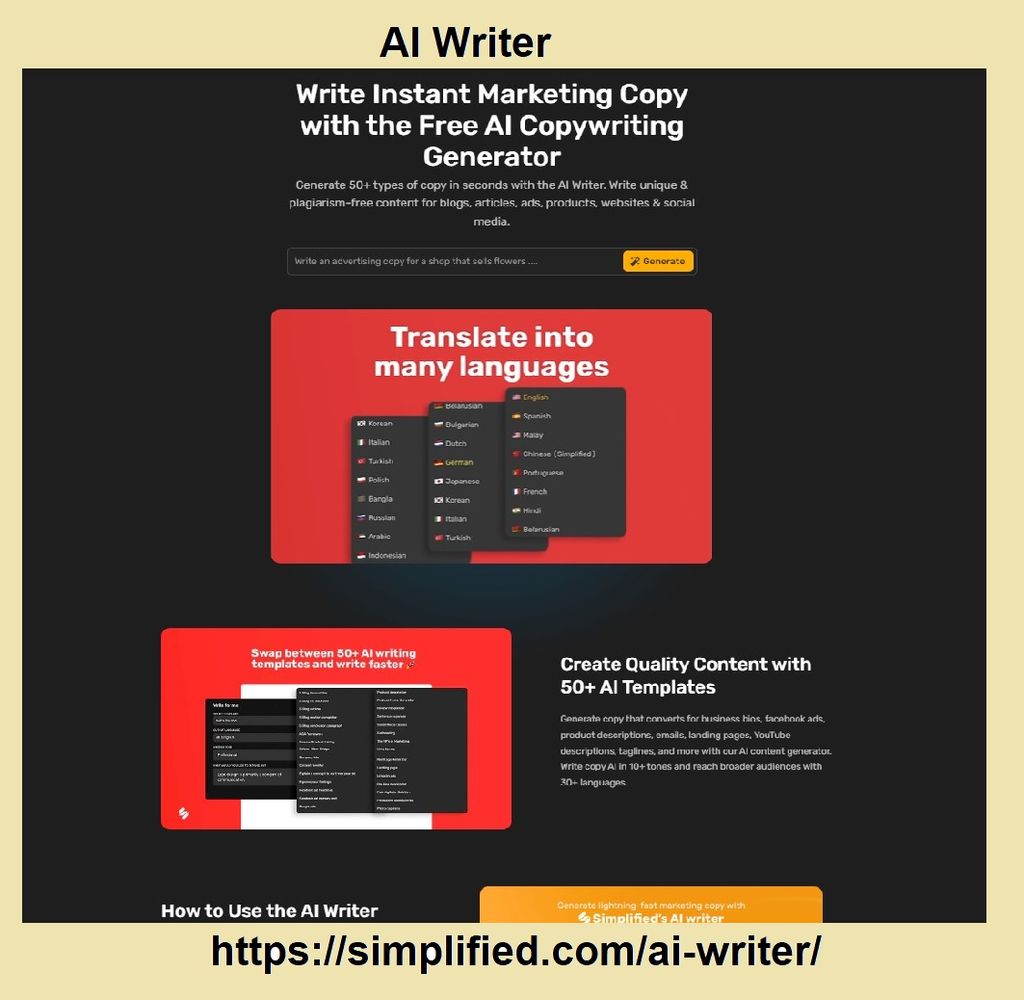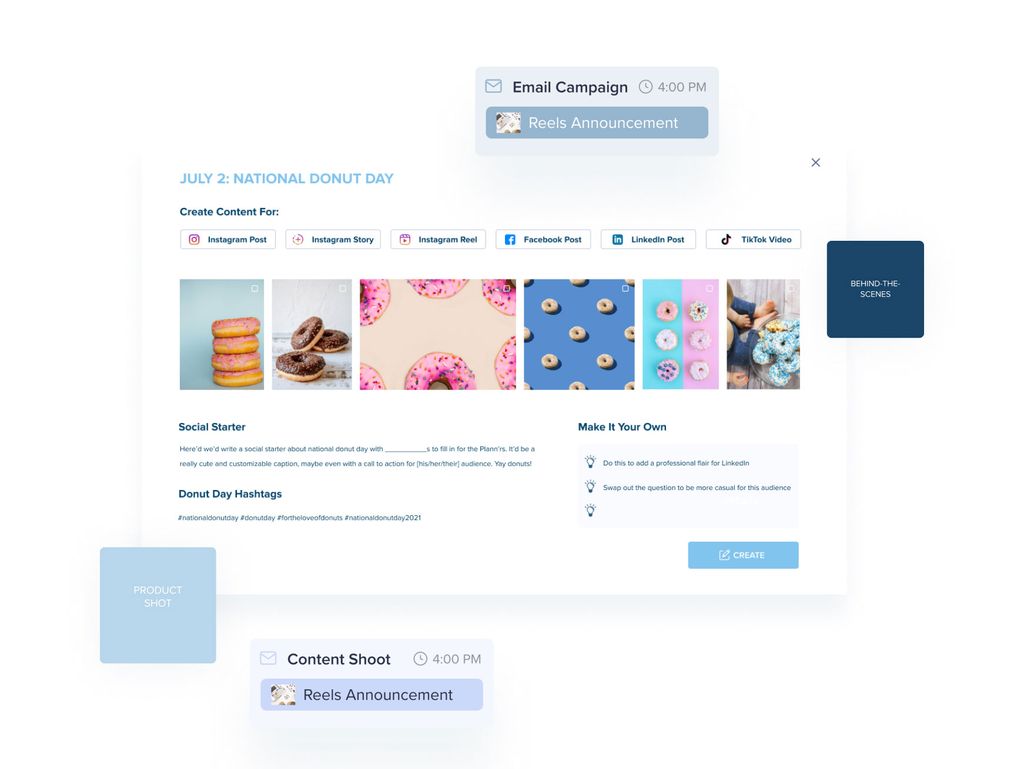
In today's digital age, email marketing is a crucial tool for businesses to engage with their audience and drive conversions. However, creating effective email content can be time-consuming and challenging. This is where AI comes in. By leveraging AI technology, businesses can unlock efficient email content creation, automating the writing process, enhancing personalization, and improving email subject lines. In this article, we will explore the role of AI in email content creation and discuss AI-powered strategies to optimize email copywriting. We will also address the challenges associated with AI-driven email content creation and provide key takeaways for successful implementation.
Automating email writing can greatly improve efficiency and productivity. By using AI-powered tools, repetitive tasks such as drafting and sending emails can be automated, allowing marketers to focus on more strategic activities. These tools can generate personalized email content based on predefined templates and user data, saving time and effort. Additionally, AI can analyze email engagement data to identify patterns and optimize email content for better results.
Enhancing personalization in email content is crucial for engaging recipients and driving conversions. By leveraging AI, marketers can create highly tailored and relevant email campaigns that resonate with individual recipients. AI algorithms can analyze customer data, such as past purchase behavior, browsing history, and demographic information, to generate personalized email content. This includes dynamically inserting recipient-specific information, such as their name, location, or recent interactions with the brand. Personalized emails have been shown to significantly improve open rates, click-through rates, and overall campaign performance.
When it comes to email subject lines, captivating your audience's attention is crucial. A well-crafted subject line can significantly impact the open rates of your emails. Here are some strategies to improve your email subject lines:
Remember, the subject line is the first impression your email makes, so make it count!
When it comes to generating compelling email copy, AI can be a valuable tool. By analyzing large amounts of data and utilizing natural language processing algorithms, AI can help marketers create engaging and persuasive content. AI can identify patterns and trends in successful email campaigns, allowing marketers to understand what resonates with their audience and tailor their messaging accordingly.
In addition, AI can assist in personalizing email content by dynamically inserting relevant information, such as the recipient's name or previous purchase history. This level of personalization can significantly improve the effectiveness of email campaigns and drive higher engagement and conversion rates.
To further enhance the impact of email copy, marketers can leverage AI to optimize the length of their emails. AI algorithms can analyze the performance of different email lengths and provide recommendations on the ideal length for maximum impact. This ensures that the message is concise and to the point, capturing the reader's attention and increasing the chances of a desired action.
Overall, AI-powered email copywriting enables marketers to create compelling, personalized, and optimized content that resonates with their audience and drives results.
When it comes to email marketing, the length of your emails plays a crucial role in capturing and retaining the attention of your audience. Short and concise emails tend to perform better as they are easier to read and digest. However, it is important to find the right balance between brevity and providing enough information.
To optimize the length of your emails, consider the following:
Remember, the goal is to deliver your message effectively while keeping the email concise and engaging.
A/B testing is a powerful technique that allows marketers to compare the performance of different email variations and identify the most effective one. With the help of AI, A/B testing can be taken to the next level, enabling marketers to analyze large amounts of data and make data-driven decisions. AI algorithms can automatically generate different email variations and test them against each other, saving time and effort. By analyzing metrics such as open rates, click-through rates, and conversion rates, AI can provide valuable insights into what resonates with the audience and optimize email content for better results.

Segmentation and targeting are crucial strategies in email marketing. By dividing your audience into smaller segments based on their demographics, behaviors, or preferences, you can deliver more personalized and relevant content. This approach allows you to tailor your messages to specific groups, increasing engagement and conversion rates.
Implementing segmentation and targeting requires collecting and analyzing data about your subscribers. You can use various criteria such as age, location, purchase history, or browsing behavior to create segments. Once you have defined your segments, you can create targeted email campaigns that address the unique needs and interests of each group.
To ensure effective segmentation and targeting, regularly review and update your segments based on new data and insights. Continuously monitor the performance of your campaigns and make adjustments as needed to optimize your email content for different segments.
Dynamic content generation is a powerful feature of AI-powered email marketing. It allows marketers to create personalized and relevant content for each recipient based on their unique characteristics and behaviors. By leveraging AI algorithms, marketers can dynamically insert specific content elements such as product recommendations, personalized offers, or tailored messaging into their emails.
This level of personalization not only improves the overall customer experience but also increases engagement and conversion rates. According to a study by [XYZ Marketing], emails with dynamic content generated a [20% increase] in click-through rates compared to static emails.
To implement dynamic content generation effectively, marketers need to have a robust customer segmentation strategy in place. By segmenting their audience based on various attributes such as demographics, purchase history, or browsing behavior, marketers can deliver highly targeted and personalized content to each segment.
Additionally, AI-powered tools can analyze customer data in real-time and make data-driven recommendations for dynamic content elements. This ensures that the content is always relevant and up-to-date, further enhancing the effectiveness of email campaigns.
Behavioral email automation is a powerful strategy that leverages AI to deliver personalized and targeted email content based on user behavior. By analyzing user actions such as website visits, email opens, and clicks, AI algorithms can identify patterns and preferences to create highly relevant and engaging email campaigns.
Implementing behavioral email automation can have several benefits, including:
To effectively implement behavioral email automation, businesses should ensure they have a robust AI-powered email marketing platform that can track and analyze user behavior, segment audiences, and automate the delivery of personalized emails.
Tip: When implementing behavioral email automation, it's important to regularly monitor and analyze the performance of your campaigns. This will help you identify areas for improvement and fine-tune your AI models to deliver even better results.

Maintaining a consistent brand voice is crucial for building trust and recognition among your audience. To ensure brand voice consistency in AI-driven email content creation, consider the following strategies:
Develop clear brand guidelines: Establish guidelines that outline your brand's tone, style, and messaging. This will help AI models generate content that aligns with your brand's personality.
Train AI models with brand-specific data: Provide AI models with a dataset that includes examples of your brand's previous email content. This will help the models learn and mimic your brand's unique voice.
Regularly review and refine AI-generated content: Continuously monitor and review the content generated by AI models. Make necessary adjustments to ensure it reflects your brand's voice accurately.
Collaborate with human copywriters: Combine the power of AI with human creativity. Work with copywriters who understand your brand's voice to refine and enhance the AI-generated content.
By implementing these strategies, you can maintain a consistent brand voice while leveraging the efficiency and effectiveness of AI in email content creation.
When it comes to leveraging AI for email content creation, privacy concerns are a top priority. With the increasing use of AI in email marketing, it is important to ensure that customer data is protected and used responsibly. To address these concerns, companies can take several measures:
By addressing privacy concerns, companies can build trust with their customers and ensure that AI-driven email content creation is done in an ethical and responsible manner.
When it comes to monitoring and fine-tuning AI models for email content creation, there are several important considerations to keep in mind.
Firstly, it is crucial to regularly evaluate the performance of the AI models. This can be done by analyzing key metrics such as open rates, click-through rates, and conversion rates. By monitoring these metrics, you can identify any areas where the AI models may need adjustments or improvements.
Secondly, it is important to gather feedback from users and incorporate it into the AI models. User feedback can provide valuable insights into the effectiveness and relevance of the email content generated by the AI models. This feedback can be obtained through surveys, user testing, or analyzing user engagement metrics.
Lastly, it is essential to continuously update and refine the AI models based on the evolving needs and preferences of your target audience. This can involve incorporating new data, adjusting algorithms, or fine-tuning the model parameters to ensure optimal performance.
By regularly monitoring and fine-tuning AI models, you can ensure that the email content generated is highly relevant, engaging, and effective in achieving your email marketing goals.
In conclusion, AI has revolutionized email content creation by providing efficient and effective solutions. With AI-powered tools, businesses can now generate personalized and engaging email content at scale, saving time and resources. The use of AI in email content creation also allows for data-driven decision making, enabling businesses to optimize their email marketing strategies. As AI continues to advance, we can expect even more innovative solutions to further enhance the efficiency and effectiveness of email content creation.
AI can automate the process of generating email content by analyzing data and using natural language processing algorithms to create personalized and relevant messages.
Yes, AI can enhance personalization by analyzing user data and behavior to tailor email content based on individual preferences and interests.
AI algorithms can analyze large amounts of data to identify patterns and keywords that resonate with recipients, helping to create more effective and engaging email subject lines.
AI can generate compelling email copy by analyzing successful email campaigns and using natural language generation techniques to create persuasive and engaging content.
Yes, AI can analyze recipient behavior and engagement data to determine the optimal length of email content, ensuring it is concise and engaging.
AI can automate the process of A/B testing by analyzing user responses to different email variations, allowing marketers to identify the most effective content and optimize campaign performance.